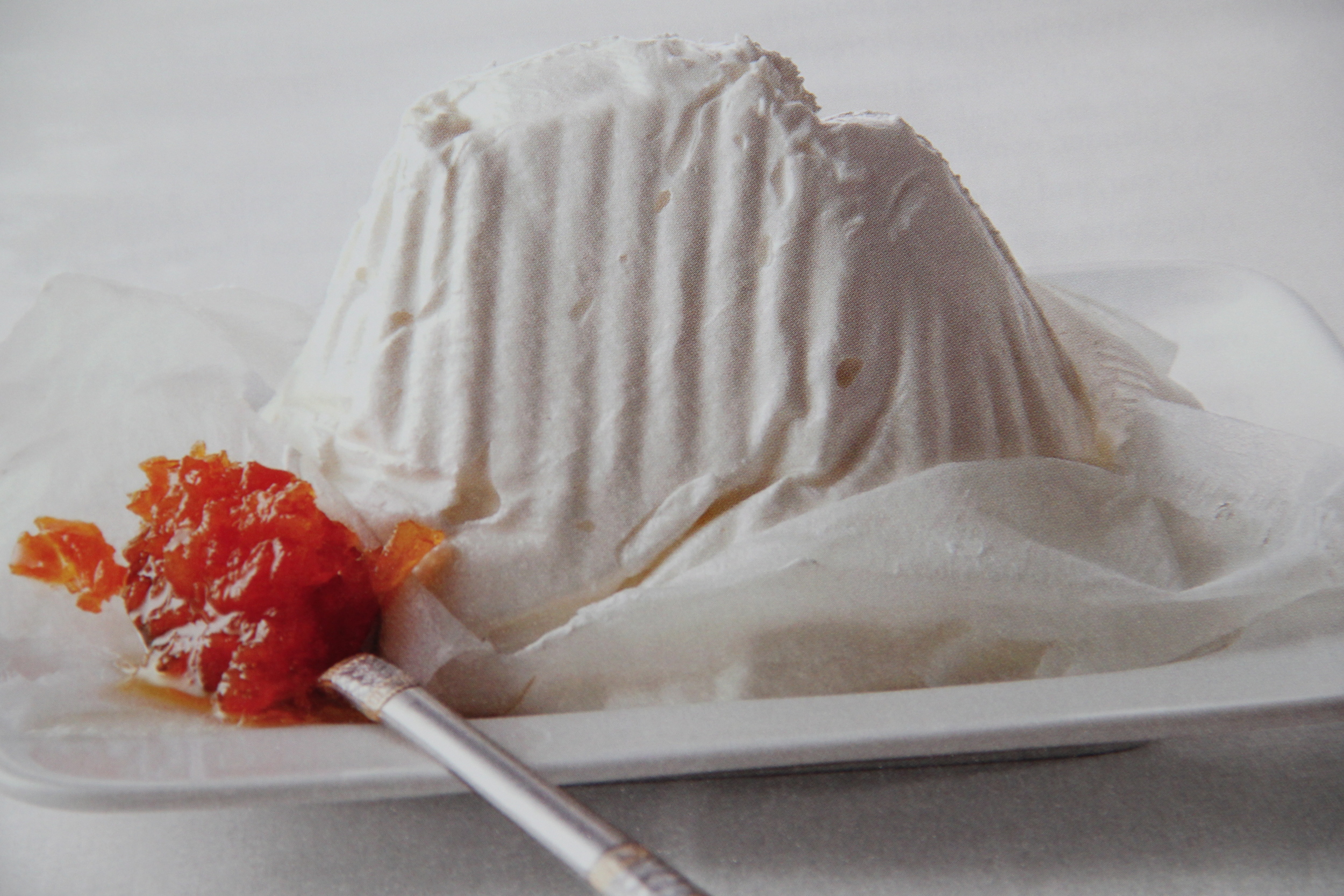 Writing about making homemade butter and cream cheese in yesterday's post made my mouth water for the jams and jellies to accompany them. I have never learned how to properly "can or preserve" (although my sister-in-law loaned me a book about such things) and I don't own a candy thermometer, which can be crucial for proper jam-making. However, I have found various ways around this lack of knowledge with credible, and in some cases, unusual results! One of my favorite recipes is for a jammy confection called Carrot Marmalade. An old Egyptian boyfriend of mine taught me how to make it. "In Egypt," he said, "jams made from carrots, dates, figs, even beets were commonplace." How divine they are with grilled pita bread, salty feta cheese and strong mint tea. And there are few things that I like better than fishing out chunks of hidden fruit suspended in the ruby murk of strawberry jam. I had one of the best versions of this jam almost 30 years ago and I helped start a company called American Spoon (Foods) based on that experience. Along with graphic artist icon, Milton Glaser, we named the company and got the first jars on the shelves of trendsetting New York food stores. I have no idea what that product tastes like now, but I am grateful for that taste-memory. Recently my dear friend Anu Duggal, who studied cooking with the venerated teacher Anne Willan, showed me the "french way" of jam-making -- with results a close second to the one I remembered so fondly. Again, no thermometer, just a keen eye for the proper "jell" in the pot and on the plate you put in the freezer for-a-moment to test the consistency. It also helps if the strawberries you use are ripe and highly perfumed. They were. We bought them at the local farmers market up the street in Park Slope, Brooklyn at the height of strawberry season.
Writing about making homemade butter and cream cheese in yesterday's post made my mouth water for the jams and jellies to accompany them. I have never learned how to properly "can or preserve" (although my sister-in-law loaned me a book about such things) and I don't own a candy thermometer, which can be crucial for proper jam-making. However, I have found various ways around this lack of knowledge with credible, and in some cases, unusual results! One of my favorite recipes is for a jammy confection called Carrot Marmalade. An old Egyptian boyfriend of mine taught me how to make it. "In Egypt," he said, "jams made from carrots, dates, figs, even beets were commonplace." How divine they are with grilled pita bread, salty feta cheese and strong mint tea. And there are few things that I like better than fishing out chunks of hidden fruit suspended in the ruby murk of strawberry jam. I had one of the best versions of this jam almost 30 years ago and I helped start a company called American Spoon (Foods) based on that experience. Along with graphic artist icon, Milton Glaser, we named the company and got the first jars on the shelves of trendsetting New York food stores. I have no idea what that product tastes like now, but I am grateful for that taste-memory. Recently my dear friend Anu Duggal, who studied cooking with the venerated teacher Anne Willan, showed me the "french way" of jam-making -- with results a close second to the one I remembered so fondly. Again, no thermometer, just a keen eye for the proper "jell" in the pot and on the plate you put in the freezer for-a-moment to test the consistency. It also helps if the strawberries you use are ripe and highly perfumed. They were. We bought them at the local farmers market up the street in Park Slope, Brooklyn at the height of strawberry season.
But the most delightful recipe of all is one I invented for kids in my book called Kids Cook 1-2-3. It is called the Grapiest Grape Jelly. Made with purple grape juice, honey and unflavored gelatin, it is the wobbliest, fruitiest, most delicious jelly you'll ever eat!
Baguette, anyone?
Egyptian Carrot Marmalade (adapted from Radically Simple) I adore this. Serve as you would any marmalade. It's delicious with butter, cream cheese (see yesterday's blog), and goat cheese, too.
1 pound carrots, peeled 2 cups sugar grated zest and juice of 1 large lemon 1/4 teaspoon ground cardamom
Cut the carrots into 1-inch pieces. Pulse in a food processor until coarsely ground (about 1/8-inch pieces). You will have about 3 cups. Put the carrots in a large saucepan. Add the sugar, lemon zest, 3 tablespoons lemon juice, the cardamom and a large pinch of salt. Bring to a rapid boil. Stir and boil 1 minute. Reduce the heat to low and simmer about 1 hour, stirring frequently. To test if it's ready, put 1 tablespoon of the mixture on a small plate. Put in the freezer 1 minute. If it becomes firm and doesn't flow, it's done (it will still look quite liquid in the pot). Let cool, cover and refrigerate up to several weeks. Makes about 2 cups
The Grapiest Grape Jelly (adapted from Kids Cook 1-2-3) 2 cups purple grape juice 2 tablespoons honey 1 packet unflavored gelatin
Put the juice in a medium saucepan. Stir in the honey and bring to a boil. Lower the heat to medium and sprinkle the gelatin powder over the juice. Using a small wire whisk, stir the gelatin into the juice until it dissolves. Make sure there are no lumps. Continue to cook and whisk for 3 minutes. Remove from the heat pour the liquid into an 8-x-8 inch square glass pan. Let cool. Refrigerate for 3 hours, or until very firm. Scrape up the jelly with a spoon and put into a jar. Keep refrigerated. Makes about 1-3/4 cups
